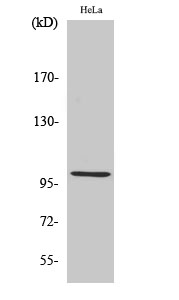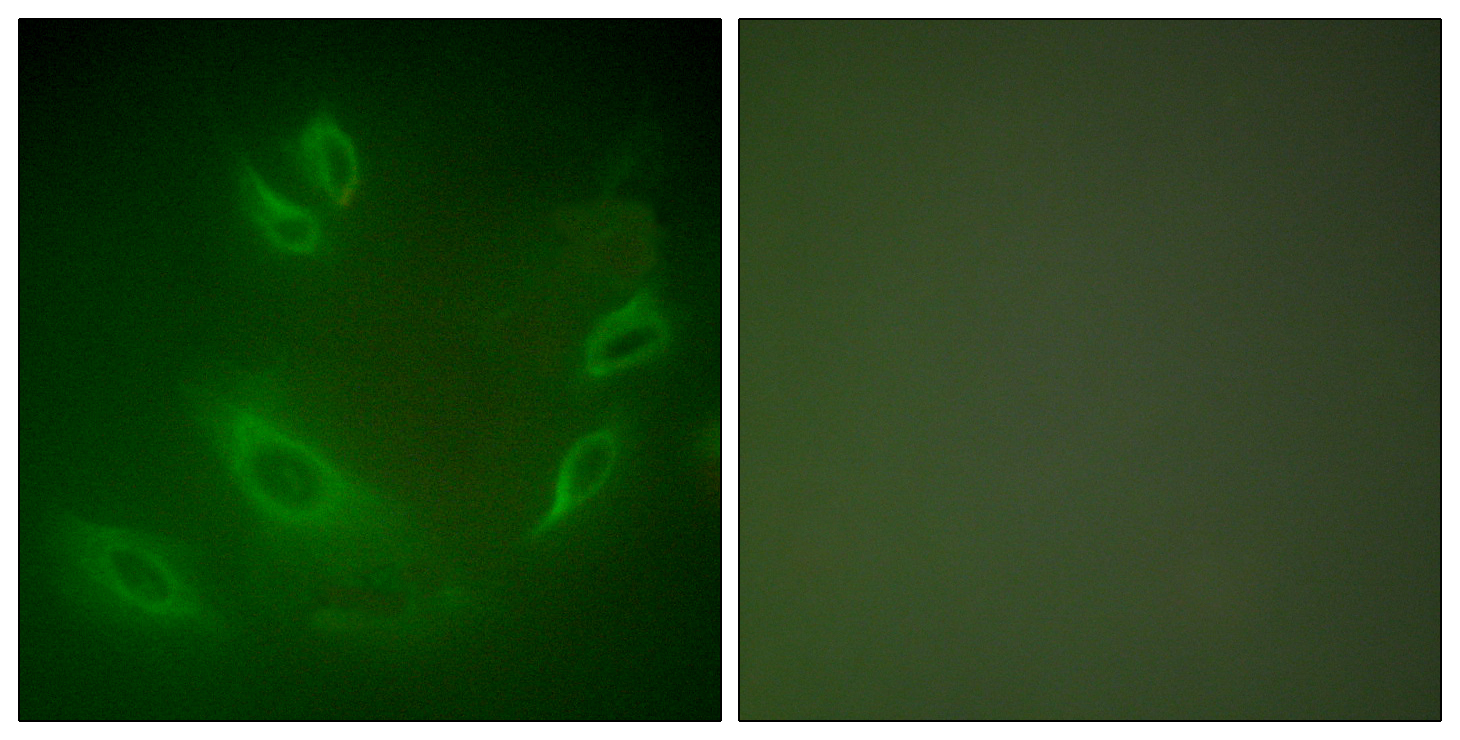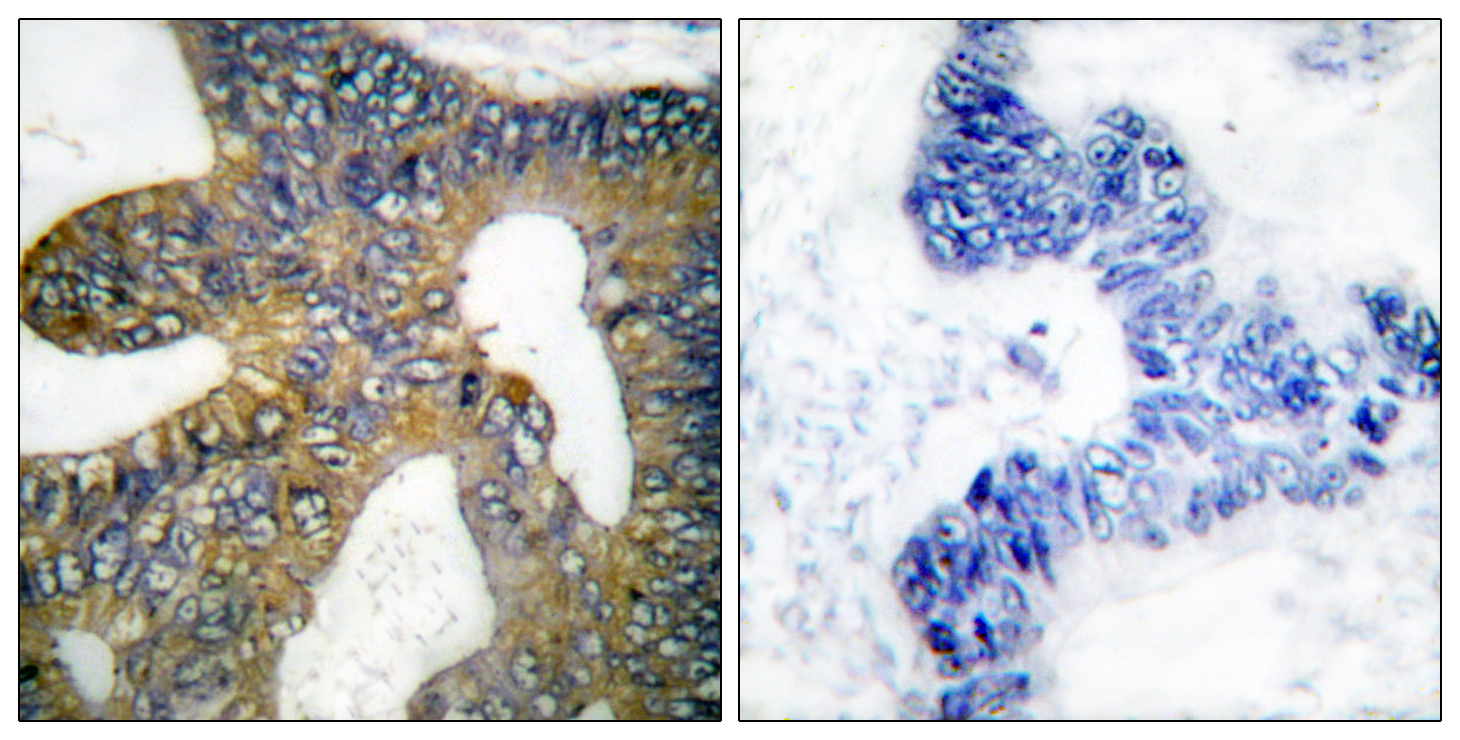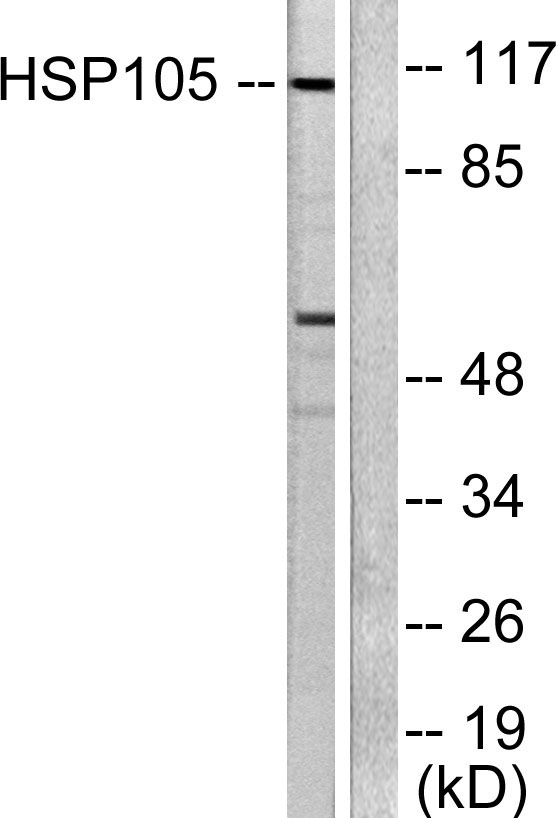HSP105 Polyclonal Antibody
- Catalog No.:YT2249
- Applications:WB;IHC;IF;ELISA
- Reactivity:Human;Mouse
- Target:
- HSP105
- Fields:
- >>Protein processing in endoplasmic reticulum
- Gene Name:
- HSPH1
- Protein Name:
- Heat shock protein 105 kDa
- Human Gene Id:
- 10808
- Human Swiss Prot No:
- Q92598
- Mouse Gene Id:
- 15505
- Mouse Swiss Prot No:
- Q61699
- Immunogen:
- The antiserum was produced against synthesized peptide derived from human HSP105. AA range:791-840
- Specificity:
- HSP105 Polyclonal Antibody detects endogenous levels of HSP105 protein.
- Formulation:
- Liquid in PBS containing 50% glycerol, 0.5% BSA and 0.02% sodium azide.
- Source:
- Polyclonal, Rabbit,IgG
- Dilution:
- WB 1:500 - 1:2000. IHC 1:100 - 1:300. IF 1:200 - 1:1000. ELISA: 1:10000. Not yet tested in other applications.
- Purification:
- The antibody was affinity-purified from rabbit antiserum by affinity-chromatography using epitope-specific immunogen.
- Concentration:
- 1 mg/ml
- Storage Stability:
- -15°C to -25°C/1 year(Do not lower than -25°C)
- Other Name:
- HSPH1;HSP105;HSP110;KIAA0201;Heat shock protein 105 kDa;Antigen NY-CO-25;Heat shock 110 kDa protein
- Observed Band(KD):
- 100kD
- Background:
- function:Prevents the aggregation of denatured proteins in cells under severe stress, on which the ATP levels decrease markedly. Inhibits HSPA8/HSC70 ATPase and chaperone activities.,PTM:Phosphorylation on Ser-509 may be important for regulation of the HSPA8/HSC70 chaperone activity.,similarity:Belongs to the heat shock protein 70 family.,subunit:Interacts with HSPA8/HSC70.,tissue specificity:Highly expressed in testis. Present at lower levels in most brain regions, except cerebellum. Overexpressed in cancer cells.,
- Function:
- function:Prevents the aggregation of denatured proteins in cells under severe stress, on which the ATP levels decrease markedly. Inhibits HSPA8/HSC70 ATPase and chaperone activities.,PTM:Phosphorylation on Ser-509 may be important for regulation of the HSPA8/HSC70 chaperone activity.,similarity:Belongs to the heat shock protein 70 family.,subunit:Interacts with HSPA8/HSC70.,tissue specificity:Highly expressed in testis. Present at lower levels in most brain regions, except cerebellum. Overexpressed in cancer cells.,
- Subcellular Location:
- Cytoplasm .
- Expression:
- Highly expressed in testis. Present at lower levels in most brain regions, except cerebellum. Overexpressed in cancer cells.
- June 19-2018
- WESTERN IMMUNOBLOTTING PROTOCOL
- June 19-2018
- IMMUNOHISTOCHEMISTRY-PARAFFIN PROTOCOL
- June 19-2018
- IMMUNOFLUORESCENCE PROTOCOL
- September 08-2020
- FLOW-CYTOMEYRT-PROTOCOL
- May 20-2022
- Cell-Based ELISA│解您多样本WB检测之困扰
- July 13-2018
- CELL-BASED-ELISA-PROTOCOL-FOR-ACETYL-PROTEIN
- July 13-2018
- CELL-BASED-ELISA-PROTOCOL-FOR-PHOSPHO-PROTEIN
- July 13-2018
- Antibody-FAQs
- Products Images

- Western Blot analysis of various cells using HSP105 Polyclonal Antibody

- Immunofluorescence analysis of HeLa cells, using HSP105 Antibody. The picture on the right is blocked with the synthesized peptide.

- Immunohistochemistry analysis of paraffin-embedded human colon carcinoma tissue, using HSP105 Antibody. The picture on the right is blocked with the synthesized peptide.

- Western blot analysis of lysates from HeLa cells, using HSP105 Antibody. The lane on the right is blocked with the synthesized peptide.



